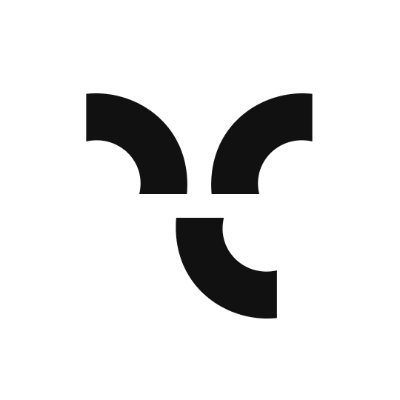
CO2 + T3 + B1
@spheno_xiphoid
Followers
22K
Following
3K
Media
837
Statuses
2K
BioElectrician ❅ Craniosacral restorer ❅ Life enjoyer ⇨ https://t.co/OjKE3b3yuM If you'd like to work with me please visit my website below ⇩
Pasadena, CA
Joined March 2023
One thread to rule them all, one thread so they can find them. One thread to bring them all, together this will bind them. Here is a thread of threads for you to peruse. Enjoy responsibly.
30
262
2K
You should care because your skin is a major endocrine organ that shapes and your hormones and metabolism as a whole. You spend all of your life wearing or sleeping on fabrics that shouldn't be actively sabotaging you. https://t.co/M1Xn2JW6yl
The skin is a major steroid producing organ, home to both the raw materials (cholesterol) and enzymes needed for their synthesis. You should be caring for your skin with this in mind, nourishing it properly while avoiding anything that may interfere with these processes…
1
1
95
If you’re looking for a laundry detergent replacement free from endocrine and metabolism disruptors, I’d recommend the magnesium based “Terra Wash Laundry Sachet”. No detergents, no nauseating scents, just magnesium and clean clothes. (It's also 100% Japanese)
38
145
3K
New article on temporomandibular dysfunction (TMD) and what you can do fix it. There is far too much bad or useless advice when it comes to the matter, so many people often come to terms with just living with it. This doesn't have to be the case.
2
0
14
This is due to the relationship of the vagus nerve with many of the muscles of the neck via the accessory nerve. https://t.co/LsIeJxTVKf
The vagus nerve allows for you to breathe, swallow, digest, and coordinates the happenings within your gut with the rest of your body. It goes beyond "anxiety" or "wellness", it is the central axis between the brain in your gut and the one in your head.
2
4
80
Your neck muscles become tense in response to stress within the gut. No amount of stretching or releasing will relax these muscles in this case. Instead, the stressor(s) within the gut must be addressed. If you are unresponsive to physical modalities, look at the gut.
27
241
2K
Since the DIO3 can turn T4 into reverse T3 (rT3), T3 is preferable as it can act on the skin by itself or via conversion to T2. Ideally any T4 applied to the skin should be done in conjunction with T3.
0
0
2
The skin is rich in the deiodinase enzymes (DIO2 & DIO3) that help turn T4 into T3 and T3 into T2. This supports the use of thyroid hormones topically for the health of the skin and hair. Doing addresses fundamentals such as metabolism and gene expression within these tissues.
Topical thyroid hormones are the underutilized secret to skin care, hair growth, wound healing, steroid production, and more. They regulate the energy supply and the eventual genetic expression of the skin and hair --limiting their appearance and function. Lather some on today.
4
7
93
The human mandible is a unique structure that forms a crucial aspect of anatomy. Often the focus of pain and dysfunction, the jaw ends up being an important indicator of the health of the individual, playing a part in digestion, respiration, and overall mechanics of the body.
2
33
370
If you like this content you’ll probably like my Hair Growth Guide: https://t.co/aayjUIKiMT
I put together the most comprehensive hair growth guide known to man. This is for victims of the Norwood reaper as well as those who wish to enhance the hair they have already. Get it now before it's turned into threads by engagement farmers and courses by third worlders. ↓
3
0
8
I mix mine with a custom lanolin solution, which provides the precursors for steroid synthesis and the enzymes needed to synthesize them. https://t.co/pWyA5DOteX
Lanolin (sheep’s wool butter) contains lanosterol which can be made into cholesterol in the skin. Here it can be then turned into more potent steroids. Raw lanolin is extremely viscous and is best combined with tallow, coconut oil, and/or cocoa butter to improve its consistency
1
0
8
Tyronene (Idealabs) is probably the easiest way to do this as it is T3 dissolved in ethanol. I decant a small amount of both water and oil based skin serums into a smaller container and add a single drop (8 mcg). This can last several applications.
2
0
12
You can add small amounts (a few mcg) of thyroid to your skin and hair care products. It does absorb so if you use too much you will feel it. This is a sign to dial back the dose. Please make sure you have eaten something prior to application.
1
0
5
Expanding on the D3 relationship, topical thyroid could help prevent and reduce calcification in the skin or tissues just beneath it. While systemic levels of these hormones are more important, targeting specific areas that may be otherwise resistant is worth trying.
1
0
3
The synergy between thyroid and the steroid Vitamin D3 suggests more benefits from topical thyroid hormones. This could mean enhanced synthesis of vitamin D3 in the skin and/or improved calcium metabolism.
1
0
3
The steroid producing leydig cells of the testes are also dependent on thyroid hormones for their metabolism as well as the enzymes used in steroid synthesis. The thin and absorbent skin in the area makes the testes a prime area for topical thyroid hormones.
1
1
3
The skin is a steroid producing organ and thyroid hormones are needed for many of the enzymes that enable this. Topical THs can potentially improve the synthesis of the youth hormones (pregnenolone, progesterone, DHEA) as well as androgens (T and DHT). https://t.co/M1Xn2JW6yl
The skin is a major steroid producing organ, home to both the raw materials (cholesterol) and enzymes needed for their synthesis. You should be caring for your skin with this in mind, nourishing it properly while avoiding anything that may interfere with these processes…
1
0
3
This is especially true for older injuries and other examples of fibrosis. Topical thyroid hormones can be used to help disassemble fibrotic tissue, replacing it with healthy elastic tissue. Long time scars or stiffness from injuries are some potential examples.
1
0
4
Repairing any injuries to the skin requires a symphony of growth factors to seal, stitch, and close the wound while simultaneously rebuilding the skin that once covered it. Again this is energy intensive and requires thyroid hormones to regulate the expression of needed genes.
1
0
3
Skin cells also possess thyroid hormone receptors that control collagen turnover and overall skin homeostasis. The ability to replace dead skin cells and grow healthy new ones is regulated by thyroid hormones. This contributes to a youthful appearance free from wrinkles.
1
0
5

